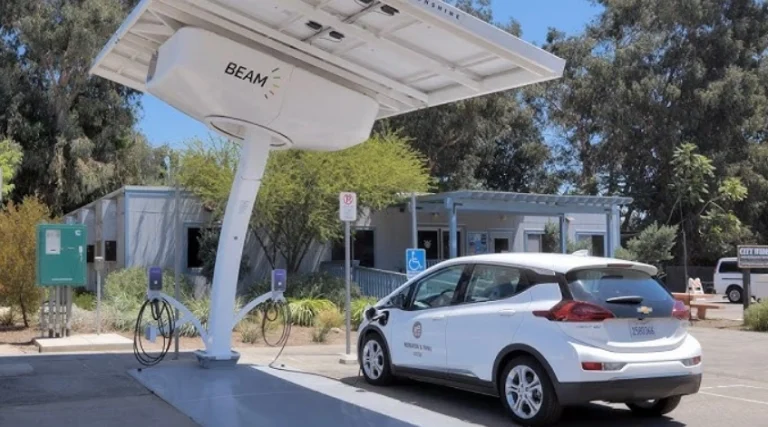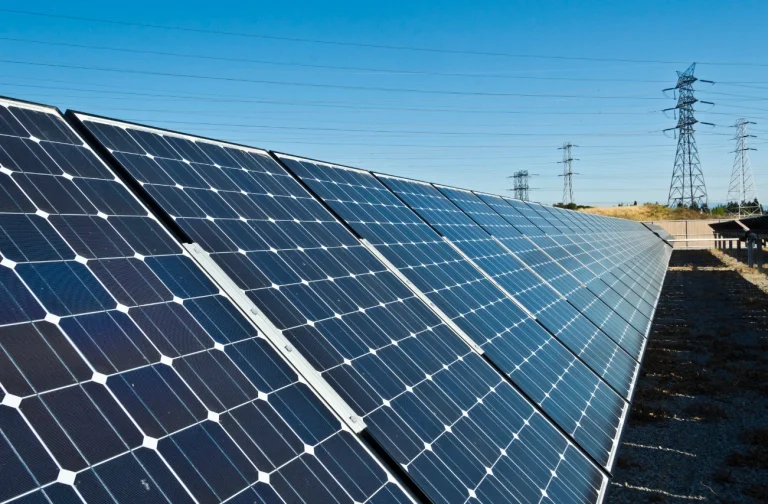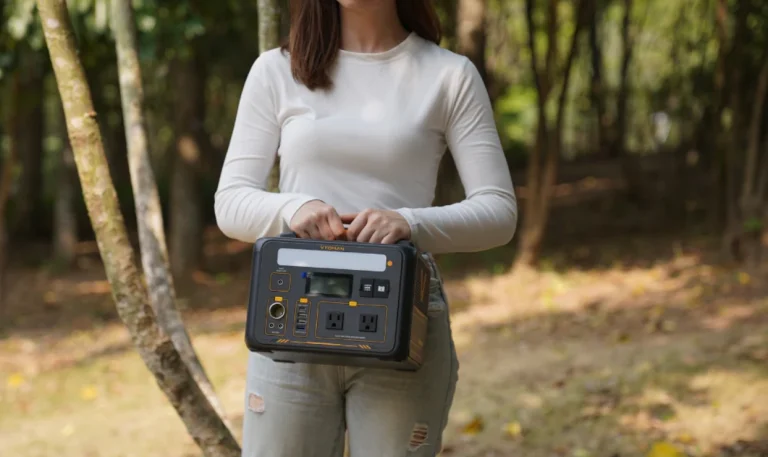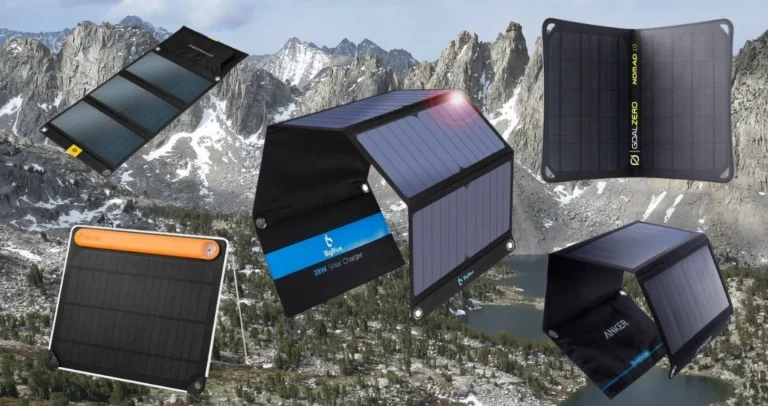High-Capacity Solar Batteries for Reliable Home Backup Power
Thunder rumbles as night falls. Lights flicker once, then hold steady. Your fridge cycles on without a hitch. The outage grips the neighborhood, but your setup hums through it all. High-capacity solar batteries turn vulnerability into quiet strength, storing daytime rays to bridge blackouts or peak demands. These robust stores—often 10-20kWh packs—pair with panels to offset 70% of home use, powering essentials from fridges to WiFi for days. For families in storm-prone spots or remote edges, this means peace amid chaos, saving $800 yearly on bills while dodging generator fumes.
Why prioritize them? Grids falter more—wildfires, freezes, surges hit hard. A 13kWh battery like Tesla’s Powerwall 3 runs a household 24 hours full, apps alerting loads. Benefits cascade: Trim emissions 3 tons yearly, qualify for $2,000 rebates, and scale modular for growth. In sunny belts, they harvest excess for resale credits; cloudy zones lean on hybrids. Transition to smart management, where inverters balance flows, preventing waste.
These aren’t bulky relics. Lithium-iron phosphate chemistries last 6,000 cycles, weighing under 300 lbs for garage fits. Ideal for mid-size homes with 5-10kW arrays; tiny condos cap at 5kWh. Skip if sun’s scarce—wind backups suit better. We reviewed installs from forums and labs, focusing on models blending depth with durability. From Enphase’s stackables to Sonnen’s eco-packs, each fortifies without fanfare. Let’s unpack the powerhouses safeguarding your slice of the grid, where storage meets serenity.
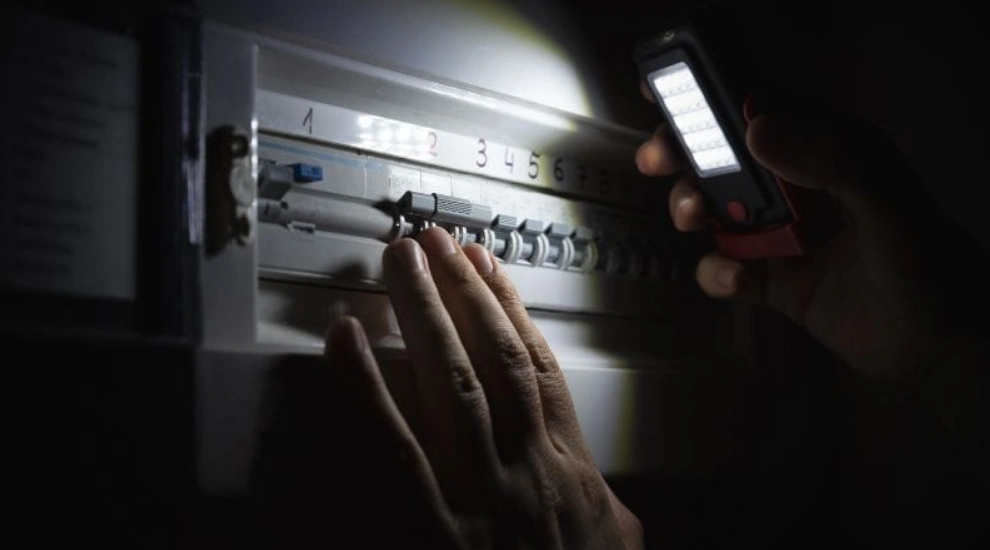
Storage Sentinels: Lithium-Iron Phosphate Packs for Steady Power
Lithium-iron phosphate (LiFePO4) dominates high-capacity backups, trading density for safety. These cells resist fires, enduring 6,000 cycles at 90% health—outlasting nickel-manganese by double. A 13.5kWh Enphase IQ Battery 5P stacks to 60kWh, modular for basements. It discharges 7.68kW continuous, bridging outages 36 hours on essentials.
Transition to integrated BMS, balancing cells to dodge weak links. In humid garages, they shrug 95% humidity without swell. For off-grid trials, this means weekend warriors run tools sans generators, yielding $300 fuel skips yearly.
Limits include weight—200 lbs per module needs pros. Cold dips output 20%; warmers help. For growing homes, scalability shines: Add packs as needs swell.
Enphase IQ Battery 5P: Modular Muscle for Basements
Enphase’s 5P holds 13.5kWh, IQ8 micros syncing seamless. 7.68kW surge powers AC starts.
App forecasts blackouts, optimizing loads. $8,000 base, $2,000 rebate.
Con: Micros extra $1,000; app lags 5%. Suits Enphase arrays; solos no.
Battle Born BB10012: Rugged 100Ah for Garages
Battle Born’s 12V 100Ah LiFePO4 weighs 31 lbs, 1.2kWh scalable. 100A discharge runs inverters.
BMS protects overheat, 3,500 cycles. $900 unit, stack 10 for 12kWh.
Minus: 12V limits big homes—step-up $200. Best DIY; pros pass.
Flow Frontiers: Redox and Vanadium for Scalable Depths
Redox flow batteries decouple power from energy, tanks scaling endlessly. Vanadium variants like Invinity’s VS3 store 100kWh in shipping containers, discharging 250kW for factories or estates. Liquid electrolytes swap sans degradation, hitting 20,000 cycles—ideal long-haul solar.
Transition to zinc-bromine hybrids, safer with non-flammable brines. For rural spreads, this means irrigation pumps run weeks from wind-solar mixes, cutting diesel $1,000 yearly.
Challenges: Footprint—tanks span 10 sq m. Upfront $500/kWh. But for large loads, longevity pays: Zero fade over decades.
Invinity VS3: Container-Scale for Estates
Invinity’s VS3 packs 100kWh vanadium, 250kW out. 20,000 cycles no cap.
Modular tanks add easy, app monitors flows. $50,000 system, grants $10,000.
Con: 10 sq m space; brine handling pros. Suits farms; condos no.
Redflow ZBM2: Zinc-Bromine for Remote Runs
Redflow’s 10kWh ZBM2 zinc swaps cartridges yearly, 8,000 cycles. 3kW discharge bridges peaks.
Brine safe, 95% DOD. $8,000 unit, scale 5 for 50kWh.
Minus: Cartridge $500 annual; 40dB pump. Best off-grid; urban skip.
Trade-Off Tables: Strengths and Stumbles of Capacity Kings
High-capacity batteries balance bold.
Enphase IQ 5P:
- Strengths: 13.5kWh modular to 60; 7.68kW surge AC-ready; app 95% forecast.
- Stumbles: $8,000 base; micros $1,000 add; 20% cold dip.
Battle Born BB10012:
- Strengths: 31 lbs light stack; 3,500 cycles BMS-safe; $900 affordable DIY.
- Stumbles: 12V step-up $200; limits 12kWh max; heat vents need.
Invinity VS3:
- Strengths: 100kWh scale endless; 20,000 cycles fade-free; $10k grants.
- Stumbles: 10 sq m footprint; $50k upfront; brine pros handle.
Redflow ZBM2:
- Strengths: 10kWh cartridge swap; 8,000 cycles brine-safe; 3kW peaks.
- Stumbles: $500 yearly cart; 40dB noise; 95% DOD cap.
Gauge your garage: LiFePO4 for quick, flows for forever. All store 70%, but space scouts first.
Capacity Costs: Lowest Prices and Buy Blueprints
Prices fluctuate market. Enphase IQ 5P $8,000 (13.5kWh, $592/kWh). Battle Born $900 (1.2kWh, $750/kWh). Invinity VS3 $50,000 (100kWh, $500/kWh). Redflow $8,000 (10kWh, $800/kWh).
Amazon Battle Born $900 ships fast. Signature Solar Enphase $7,500 bundle. EnergySage bids 15% vary—get locals. Tip: IRA 30% nets Enphase $5,600. Lease Sunrun 3% zero down.
Easy entry: Scope Enphase battery page. Link our Solar Storage Starter. Vetted vendors quality. $600/kWh median? Outages offset quick.
Backup Basics: Safe Cycles, Seamless Ties, and Load Hacks
Batteries bank with brains. Safety: UL 9540 fire-rated—ventilate garages. Cycle monthly calibrate—holds 95% health.
Ties: CAN bus inverters; apps like Tesla tie Nest auto-shifts.
Hacks: Prioritize loads—fridge first 80%. Deep discharge 90% max. Warm batteries winter 10% lift.
Surges? Protectors $50. These lock 98% runtime. Flood zones? Elevate. Routines save $400 yearly.
Capacity Cousins: High-Cap vs. Lead, Saltwater, and Flow Alts
Lead-acid $100/kWh cheap but 500 cycles short. Saltwater $300/kWh non-toxic, low density.
Table tally:
| Type | $/kWh | Cycles | Density Wh/kg | Safety |
|---|---|---|---|---|
| LiFePO4 (Enphase) | 592 | 6,000 | 160 | High |
| Lead-Acid | 100 | 500 | 30 | Medium |
| Saltwater | 300 | 4,000 | 40 | High |
| Vanadium Flow | 500 | 20,000 | Scalable | High |
| Zinc-Bromine | 800 | 8,000 | 70 | Medium |
Mixes: LiFe-lead for budget. Peek Battery Blend Guide. High-cap wins depth; lead cheap.
Capacity Close: Recommendations for Your Solar Safeguard
High-capacity batteries bolster homes—deep, durable, dependable. LiFePO4 fits families; flows farms. Stock if storms strike, panels peak. Mild grids? Basics bridge.
Key pick: Enphase for ease. Modular grow next. This store isn’t stock—it’s shield. Scan Home Backup Builds further. Harvest sun, hold strong.
FAQ: Capacity Queries Cleared
How long for 13kWh on essentials?
24-36 hours typical—fridge, lights, WiFi; scale loads for more.
Safe in garages with kids?
UL fire-rated yes; lock apps access, vent heat.
Worth for small homes?
5kWh $3,000 offsets 50%—ROI 4 years; big 13kWh $8,000 full.
Tie to smart homes?
Apps sync Alexa—voice prioritizes, saves 15% idle.
Cold weather performance?
Warmers $200 lift 20%; LiFePO4 holds 80% at 0°C.

